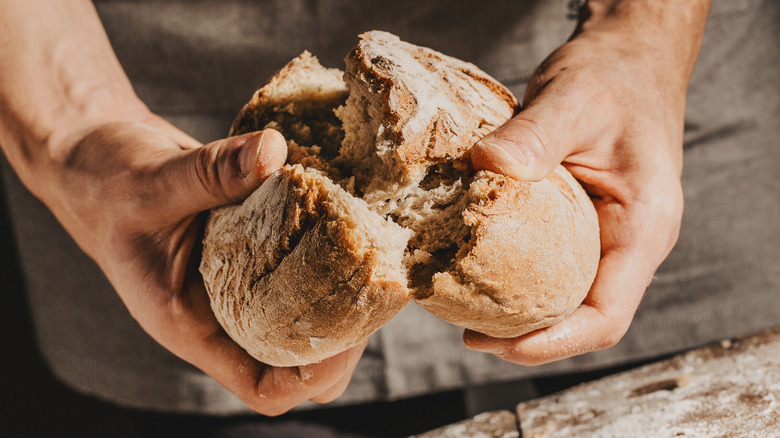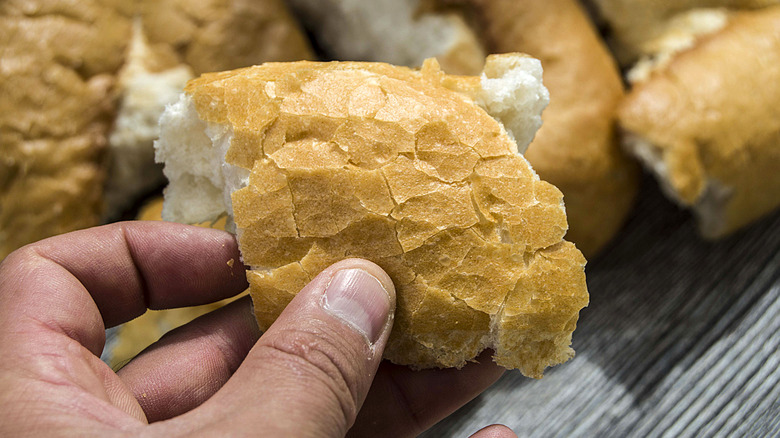Why Bread Gets Stale And How To Make It Soft Again
Nothing beats a freshly baked loaf of bread. Aroma aside, fresh bread's soft, squishy interior and crisp outer layer create one of the world's most satisfying sensory experiences. Add time to the equation, however, and that experience gets less and less pleasant until the moment you pick up that loaf of home-baked French bread and realize biting into it would chip a tooth.
Bread goes stale because of a process known as retrogradation, which happens inside flour's starch granules at the molecular level. Before bread is baked, these starch molecules are arranged very logically in a tight crystalline structure. Adding heat and water to the flour disturbs that structure. The water bonds with the starches, pushing the starch molecules away from each other. The starch granules expand as their volume grows, so that instead of that formerly tight, organized arrangement to the molecules, they're spread apart into a disorganized, gelatinized consistency. When we bite into soft, chewy bread straight from the oven, we're enjoying all that new space in the molecules. Yum!
That's when retrogradation starts. As the bread's temperature continues to drop, the molecules become tight and orderly again because the water can't hold them together anymore. This affects the bread's texture, taking us from chewy loaf to food-grade stone. Thankfully, there are a number of ways to reverse that retrogradation and make your bread soft again once it's gone stale.
How to soften bread that's gone stale
Reheating your bread in the oven is the most consistent way to reverse starch retrogradation. First, moisten the outside of the bread all over with water. The drier the loaf or thicker the crust, the more water you'll need. Wrap the damp loaf tightly in aluminum foil, and put it in a cold oven set to 300 degree Fahrenheit for 10 to 15 minutes. Finally, for a crispy crust, unwrap the bread and finish it on the oven rack for another five minutes. You can also refresh bread's softness in the microwave (use a damp cloth instead of aluminum foil) with 10 to 15-second intervals, or you can use a steamer basket or colander set over a pot of boiling water for five minutes.
Though refreshing bread is possible, it's important to store homemade bread properly to keep it fresh. Keep it in a sealed plastic bag or airtight container in a breadbox to maintain its freshness for a longer period. Since the starch molecules recrystallize faster in cold temperatures above freezing, never store bread in the refrigerator. The freezer is a good choice, though, for bread you want to store long-term; simply thaw it at room temperature. The right storage methods combined with one of these resoftening techniques means chewy bread is yours anytime you want it — which is basically all the time.

